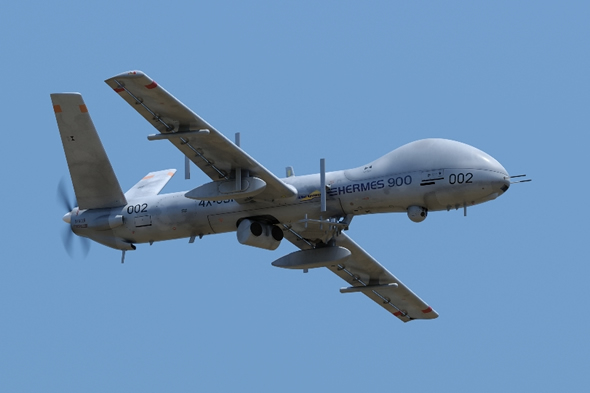Elbit Systems has recently won the third customer for its Hermes 900 Unmanned Aircraft Systems (UAS). The contract worth about $50 million was awarded by a governmental agency in the ‘American continent’, for use in ‘perimeter security’. The contract includes the Medium Altitude Long Endurance (MALE) UAS platform, along with Universal Ground Control Stations (UGCS), and highly advanced DCoMPASS multi-sensor Electro-Optical payload systems, and satellite communication (SATCOM) systems. The UAS will be operated in a variety of perimeter security missions.

According to Elad Aharonson, General Manager – Elbit Systems UAS Division, the Hermes 900 is establishing its position as perimeter and security missions in addition to its role as an intelligence gathering asset. “The added value is the unique advantage of the common ground control station for both the Hermes 900 and the Hermes 450 array, allowing enhanced operational flexibility and cost effectiveness” Aharonson added.
The Hermes 900 UAS builds on the vast operational experience accumulated by the Hermes 450, the backbone of the Israel Defense Forces’ UAS operations. Hermes 900 offers a range of enhanced capabilities, from higher flight altitude (up to 30,000 ft) to longer endurance and larger payload capacity. The system’s unique structure enables it to carry a variety of payloads in different shapes and sizes for quick “conversion” between payload configurations.
SATCOM integration opens new capabilities for Hermes systems operators, beyond conventional Line of Sight (LoS) used in current systems. Supported by SATCOm links, a UAV like the Hermes 900 can deploy from a main operating hub, to patrol areas at ranges limited only by the fuel it carries. According to ELbit Systems, the Hermes900 with flight endurance of more than 30 hours, can, with the use of SATCOM, drastically extend its flight range from 300 km (conventional line of sight) to 2000 km via Satellite. Another benefit is the ability to deploy the Hermes 900 from forward bases in theater, while maintaining the mission control center in a remote and convenient location. In theater, reliance on SATCOM link to and from the mission control station enables the UAV to descend to very low altitude (thus gaining higher resolution images), without the limitation of LoS obstruction caused by topography.
















